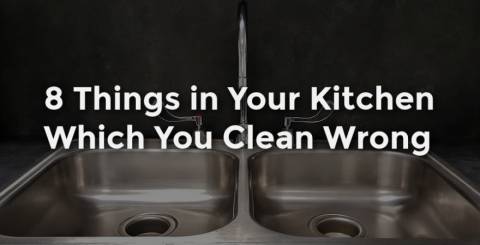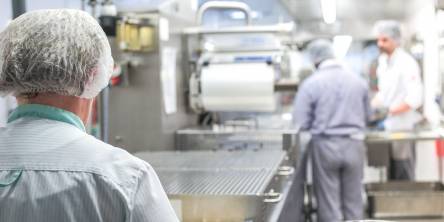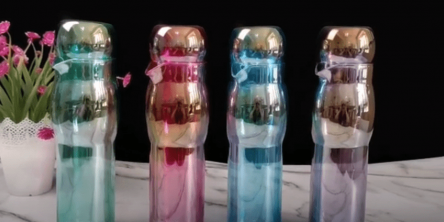8 Things in Your Kitchen You Clean Wrong

A lot of rooms in your home need regular cleaning, and nowhere is that more important than it is for your kitchen. And while you think you have it all under control, the reality is you’re probably cleaning most of your kitchen items wrong. Here are some examples:
1. Dishes
It’s so easy to buy a dishwasher and free yourself from the choir of having to wash your plates every night. The downside is that most people overfill their dishwashers. While this doesn’t matter much to the machine itself, it does contribute to a lower quality of washing. The more dishes and eating utensils you put inside, the harder it is for everything to get washed thoroughly. The solution to this cleaning problem is an easy one: never stack dishes on top of one another so everything would get cleaned as nicely as possible. Also, put forks with their tines up.
2. Cutting Board
The numerous cutting marks of your wooden and plastic cutting boards are home to numerous bacteria. Sadly a simple wipe down never helps remove any part of the germs. Although researches have tried to determine whether plastic is easier to sanitize than wood, results have shown there isn’t a significant difference. According to NC State News plastic cutting boards should be cleaned with a solution of water and bleach (one tablespoon of bleach per one gallon of water), while wooden boards can use a solution of Mr. Clean and water. The softer the cutting board wood, the more marks it gets, thus the more you need to clean it.
3. Kitchen Sink
You might be very surprised to find out your kitchen sink is in many ways dirtier than your toilet. How so? It’s because of all the food particles left over from all your dishes. They can easily become a breeding ground for all kinds of diseases like salmonella and E.coli. Sadly a simple wipe down of your sink never helps eradicate the bacteria. According to the director of infection control at Long Island College Hospital of Brooklyn, New York, Eileen Abruzzo, the proper way to wash your sink is with water and bleach solution. Fill half your sink with warm water and add two cups of bleach. Wait until the water cools down and flush it all down the drain. Afterward, rinse the sink with fresh water. You must do this once a day using rubber gloves, and don’t forget to clean the drain plug as well.
4. Grocery Bags
It’s great if you’re helping out the planet by carrying your food ingredients in your reusable grocery bags. However, did you know those same bags are packed full of germs? According to Health Essentials, “Cross-contamination can occur when meat, produce, and pre-cooked foods are placed in the same bag.” It’s no surprise either that almost nobody washes their reusable bags. While almost nobody would carry several different bags for different goods to avoid cross-contamination, you can still give bacteria the slip by washing your bags regularly, using them only for groceries, and storing them in a clean cabinet and not your car trunk.
5. Coffee Machine
Most, if not all, people rarely take time to clean their coffee machines. Coffee machines can harbor mold and thus bacteria if you leave their reservoirs closed when not in use. The drip filters need to be cleaned after each use and deep cleaned every few months. Do you do that? Well, if you coffee starts to taste weird, it’s high time you did. Fortunately it’s easy, all you need is a vinegar and water solution. In a tank mix together equal parts of white vinegar and water and fill the reservoir. Remove the filter. Let the machine run a few brew cycles and then empty the reservoir. Next fill it with water and give it a few cycles until it no longer smells of vinegar.
6. Removable Cooker Burners
Some cooker burners are removable, yet most people only clean around them and never remove them. If you have removable ones, stop scrubbing because there is a far easier way according to One Good Thing. In includes the removables, several containers, water and ammonia. Put all the parts in different containers and fill with ammonia. Then leave the containers for several hours, so the ammonia would dissolve the grime on your burner parts. For old burners it’s recommended you leave them overnight for maximum efficiency. Be advised, ammonia has a very strong smell, so it’s best to leave the containers outside. After this period clean the burners, rinse them and enjoy their shine.
7. Fridge
Even though your fridge is meant to store your food in clean and fresh conditions, it can also be packed full of germs. Low temperatures alone are not enough to stop the spreading of bacteria as some germs actually thrive in cold temperatures. All they need is some food spills and condensation and voila, your fridge has germs. A wipe down with a damp cloth won’t help either. In this case you need a vinegar and hot water solution. Wipe the fridge walls with this solution every week. Pay special attention to drawers where meat is kept and especially the salad drawers. According to MailOnline, the salad drawer has around 8000 bacteria.
8. Oven
Most ovens have a self-cleaning feature, which sounds really cool because it would save us a lot of elbow grease. However, according to The Kitchn, this feature can do more damage than good and is just there to better sell the product. Using this feature can result in carbon monoxide build-up and blowing of a fuse, which would later be really hard to get to. So, if that’s how you clean your oven, know it might cost you eventually. Usually the better way is the old fashioned way with a baking soda and water paste. Coat the inside of your oven with the paste and wait overnight until it dissolves the grime. After that wipe the paste with a clean damp cloth. Or consider oven cleaning services. Professionals usually take apart the oven and clean every segment such as: racks, trays panels and fants separately with special detergents. Unlike other kitchen items, ovens and cookers really need special care.
Similar Articles
Who says you need deep pockets to enjoy mouth-watering meals? Eating like royalty doesn’t mean booking fancy restaurants or spending a fortune on gourmet ingredients
Learn how modern cafeterias balance taste and nutrition with fresh, flavorful, and healthy meal options tailored to diverse dietary needs and employee well-being.
Learn how digital menu boards revolutionize restaurants with dynamic content, eco-friendly updates, enhanced customer experiences, and streamlined operations.
Discover the best foods to eat and avoid with new dentures for comfort, durability, and a healthy smile. Tips for a smooth dietary transition included!
In today’s fast-paced world, many people seek healthier eating methods without compromising taste or quality. One of the most popular approaches to achieving this balance is low-carb eating. This lifestyle helps manage weight, improve overall health, and keep energy levels consistent throughout the day
Discover the cutting-edge technologies, from cryogenics to AI, that revolutionize food transportation, ensuring freshness and sustainability across the globe.
Create a magical candy buffet for any event! Discover tips on candy selection, estimating quantities, creative theming, and ensuring dietary considerations.
Discover essential tips for selecting the ideal food canning machine. Learn key factors that ensure quality, efficiency, and long-term value for your needs.
Discover the future of functional and aesthetic design with electroplating glass bottles, enhancing durability and beauty for innovative packaging solutions.









